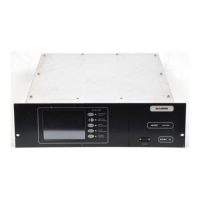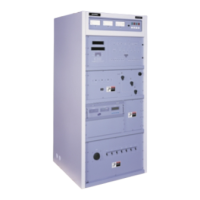888-2406-002 6-1
WARNING: Disconnect primary power prior to servicing.
Troubleshooting
6.1 Introduction
In order to assist in the troubleshooting of the Platinum Z2 transmitter this section
will concentrate in the following areas:
• Using the Diagnostics Display System, concentrating on the Fault Log.
• Defining all of the transmitter fault indications, their origin, and their effect on
the transmitter.
In the technicians favor is the fact that the Platinum Z2 transmitter has relatively
few individual parts due to the modular design. The basic philosophy behind the
design is to allow exchange of and/or replacement of relatively inexpensive
modular components when a failure does occur, rather than troubleshooting down to
the component level. This is not to say that component level troubleshooting is not
an option. But due to the complexity of the circuitry and the use of surface mount
components, especially in the controller boards, (which are multi-layer boards as
well), troubleshooting and field replacement can be very difficult. It is also easy to
damage these boards with improper equipment and soldering techniques due to the
size of the components, traces and soldering pads.
There are only 6 analog adjustments in the transmitter and control system, with
most of them being factory, one-time, adjustments. This all but eliminates mis-
adjustment as a cause of failure. The controller itself is also modular, using at least 5
separate boards, with its own self diagnostics for communications between the
microprocessors and read/write tests for the on board memory. There is also the
redundancy factor provided by the Life Support Board, which will operate the
transmitter at a reduced power level if the Master Controller fails.
